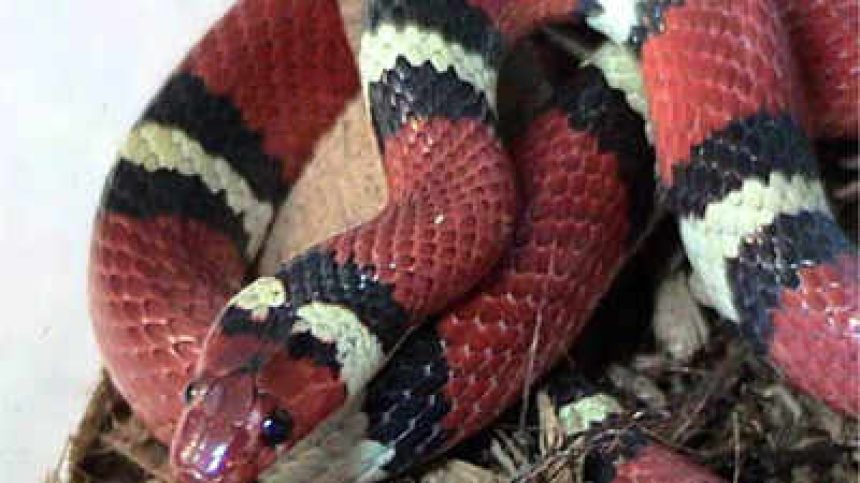Kingsnakes are nonpoisonous snakes, which appear in all northern parts of the American region as medium sized snakes. Their well-patterned body scales have proved them good and efficient predators while killing through the constriction system. This adaptable snake is prevalent in various locations, starting with forests up to urban towns as they live effectively in both sites. This can be evidenced about their popular character of ingesting venomous serpents which include the snakes with the hood, namely; rattlesnakes due to their resistance with pit viper. Because kingsnakes are quite docile, they make for very good pets, and several species have slightly different coloration and behaviors. Nevertheless, there are species of kingsnakes that are under threat.
Kingsnakes: Taxonomy and classification
Kingsnakes are part of the genus Lampropeltis, in the Colubridae family. The translation of the genus name is “shiny shields” in Greek, which refers to a snake’s smooth, glossy, well-defined scales. The snake’s slick scales serve to disguise the animal from birds of prey, foxes, coyotes, and even other snakes.
Previously, scientists had considered species of the kingsnake as interbreeding and their viable offspring. Today, though, the scientists change their method and consider classification using DNA studies which show their relationships and the genetic closeness, thereby being accurate in classification.
Reclassification of kingsnakes
The reclassification of kingsnakes has ignited a debate between scientists. One such study done in 2009 suggested that some subspecies of the common kingsnake, Lampropeltis getula, are separate species; among them were black kingsnakes, eastern kingsnakes, speckled kingsnakes, Sonora kingsnakes, and California kingsnakes. This view is based on DNA analysis instead of the previous practice of relying on interbreeding patterns.
In addition, a 2013 paper in the journal Systematic Biology proposed that the scarlet kingsnake, previously classified as a milk snake, be considered a distinct species of kingsnake. Some publications have adopted this theory, while others continue to refer to the scarlet kingsnake as a subspecies of the milk snake.
Kingsnakes: Physical characteristics and distribution
Kingsnakes are known by their striking patterns of bands and speckles with vibrant contrasting colors. They break up the snake’s outline, making it a less detectable prey for their predators. There is geographic variability in color and pattern. An example would be the eastern king snake in the eastern U.S. has thicker bands along their body, where mountain kings have thinner bands or nearly solid black coloration. Most kingsnakes are around 2 to 6 feet (0.6 to 1.8 meters) long. They have shiny scales, a spoon-shaped head, round pupils, and only one anal plate. The kingsnake body shape and coloration is highly specialized to conceal the animal in the many habitats where they live, such as forests, grasslands, rocky terrains, and even urban environments.
Kingsnake species
There are quite a few different species of kingsnakes, all looking different and occupying different areas, including the following:
- Eastern kingsnake (Lampropeltis getula): With its chain-like pattern of white or yellowish bands that cross the black body, this is a snake of southern New Jersey to Florida, and west into the Appalachians.
- Black kingsnake (Lampropeltis nigra): Found almost exclusively black, with white or yellow spots left mostly as traces, this species is most commonly found in Tennessee and the surrounding areas. It often is confused with the eastern kingsnake but seems to have a more solid look.
- Speckled kingsnake (Lampropeltis holbrooki): A yellow or white-speckled, black- or brown-colored kingsnake can be found from Illinois south through Texas in the middle part of the U.S.
- California kingsnake (Lampropeltis californiae): This species is smaller compared to other snakes, with most having white bands or longitudinal stripes against a black background. They range throughout most of California and into parts of Oregon, Arizona, and northern Mexico.
- Scarlet kingsnake (Lampropeltis elapsoides): This tiny species, ranging from 1 to 2 feet (0.3 to 0.6 meters), mimics the venomous coral snake with its red, yellow, and black bands. Often mistaken for a dangerous species due to its coloration, this snake is found from Virginia to Florida.
Kingsnakes: Habitat and distribution
Kingsnakes live in forests, grassland, rocky deserts, and even suburban areas. Kingsnakes are mostly terrestrial, meaning they stay on the ground rather than going up a tree or swimming. They could be more found near swamps and riverbanks in wetter regions like in the eastern U.S. Kingsnakes could be seen as less obtrusive than other snakes, for instance, hiding under the cover of rocks, logs, and in burrows to avoid being found by predation.
Kingsnakes: Behaviour and hunting
Kingsnakes are active hunters rather than ambush predators. They make use of a very sensitive olfactory system for tracking down their prey, such as rodents, birds, bird eggs, lizards, frogs, and other snakes. Constrictors, they kill the prey by compressing it tight until blood supply to the brain is cut off, and the prey dies from ischemia.
The most interesting fact about kingsnakes is their tendency to feed on venomous snakes. Their immunity to the pit viper’s venom makes them safe while eating rattlesnakes and cottonmouths, though these species are harmful to many animals. Apart from feeding on venomous species, they feed on other harmless species, like rat snakes and garter snakes.
Kingsnakes: Reproduction and life span
Kingsnakes are oviparous, and they lay eggs that hatch after approximately 2 to 3 months. Female kingsnakes lay clutches of 3 to 24 eggs in secluded areas such as rotting logs or debris. The young are completely independent and begin hunting immediately once the eggs hatch. Kingsnakes reach sexual maturity at the age of 2 to 4 years and may live for as many as 20 to 30 years in captivity, although not much information is available regarding their lifespan in the wild.
Males compete for females during mating season, which runs from March to August, by following chemical scent trails. They will often wrestle until one male yields. The female lays eggs after mating, and the process is repeated each year.
Kingsnakes: Endangerment and conservation status
Although most kingsnake species are not threatened, several populations are in decline. The Todos Santos Island Kingsnake is listed as critically endangered, and there is cause for concern with regard to decreasing populations of the eastern kingsnake, especially in Florida and the southeastern coastal plain. Scientists have suggested that fire ants may be an invasive threat to kingsnakes through egg and juvenile predation.
While the population of kingsnakes is stable, some areas remain under threat of conservation due to habitat loss, human interference, and predation by invasive species.
Why are they called kingsnakes?
The name “kingsnake” came from the behavior of the snake, which usually eats other snakes, including dangerous ones like the rattlesnake, the cottonmouth, and even coral snakes. Their behavior is akin to that of the king cobra, which preys on other snakes. Furthermore, kingsnakes have even developed natural resistance to the poison of pit vipers, such that they hunt and eat even these dangerous snakes without being injured.
Also Read | King cobra: The world’s longest venomous snake now classified into four species; know more about newly discovered species





